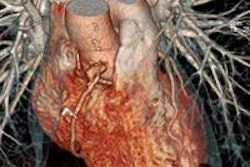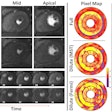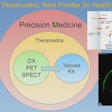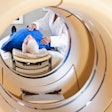SPECT, cardiac MR, and PET all reached high sensitivity for detecting obstructive coronary artery disease, but PET turned in the best diagnostic performance in a meta-analysis published in the May 8 edition of the Journal of the American College of Cardiology.
The Dutch researchers, who examined studies covering a 20-year period, also concluded that cardiac MR offered similar diagnostic accuracy to PET, but without the threat of ionizing radiation. The study was led by Dr. Caroline Jaarsma from the department of cardiology at Maastricht University Medical Center (JACC, Vol. 59:19, pp. 1719-1728).
Coronary artery disease is the leading cause of death in industrialized nations, and its prevalence is expected to increase worldwide in coming years, the authors noted. Previous studies have shown that SPECT, cardiac MR, and PET perfusion scans are being used more frequently for detection and risk assessment of obstructive coronary artery disease, given the modalities' excellent performance.
Inclusion criteria
Jaarsma and colleagues reviewed PubMed's database from January 1990 to February 2010 for studies on the diagnostic accuracy of myocardial perfusion imaging for detecting coronary artery disease (CAD). The search produced 166 articles involving 17,901 patients that met the researchers' criteria. There were 114 SPECT studies with 13,741 patients, 37 cardiac MR studies with 2,841 patients, and 15 PET studies with 1,319 patients.
For a study to be included, it needed to involve one of the perfusion imaging modalities being used to diagnose obstructive coronary artery disease, with invasive coronary angiography as the reference standard (≥ 50% diameter stenosis). There was an insufficient amount of research on other perfusion techniques, such as perfusion echocardiography and CT, to include those modalities in this study, according to the authors.
From the final 116 studies, the researchers pooled estimates of sensitivity, specificity, and diagnostic odds ratio for the three modalities on both patient and coronary artery territory levels. The odds ratio was defined as the ability or "odds" of the imaging modality to discriminate between patients with and without CAD -- the higher the number, the better the modality's diagnostic capability.
The patient-based analyses revealed similar pooled sensitivities for the three modalities, while specificities ranged from 81% for PET to 61% for SPECT. This resulted in a pooled diagnostic odds ratio of 15.31 for SPECT, 26.42 for cardiac MR, and 36.47 for PET.
Relative diagnostic odds ratios were significantly increased for cardiac MR and PET studies, compared with SPECT studies. The relative odds ratio for PET was not significantly increased when comparing PET and cardiac MR.
Patient-based analysis of pooled meta-analysis results
|
Advances in technology among the modalities also could be seen in the results. For example, four cardiac MR studies were performed with 3-tesla MRI scanners. In those results, 3-tesla cardiac MR achieved a greater diagnostic performance compared to studies using 1.5-tesla MRI.
In comparison with SPECT, the diagnostic accuracy of PET and cardiac MR remained unchanged among the majority of the subgroup analyses. PET was associated with a higher odds ratio than cardiac MR, whereas cardiac MRI demonstrated better performance than SPECT, the authors wrote.
SPECT studies of patient populations with a higher prevalence of coronary artery and three-vessel disease were associated with a lower diagnostic performance, while cardiac MR studies on patients with a higher prevalence of coronary artery and three-vessel disease achieved better performance than studies with a lower prevalence.
The authors also noted that cardiac MR was associated with a slightly higher diagnostic odds ratio than PET in studies published during or after 2006.
Direct comparisons
The authors found only a handful of studies that directly compared the diagnostic accuracy of different imaging modalities within one study population. One such study discovered an improvement in specificity for coronary artery disease with rubidium-82 PET compared to SPECT with thallium-201.
Two other studies concurred that the diagnostic accuracy of SPECT and cardiac MR on a patient-based level was comparable.
Based on the meta-analysis, Jaarsma and colleagues concluded that "SPECT, [cardiac MR], and PET all yielded a high sensitivity for the detection of obstructive CAD, with a wide range of specificity. Both [cardiac MR] and PET showed a significantly higher diagnostic accuracy than SPECT," they wrote.
"While PET demonstrated the highest diagnostic performance in a limited number of studies with small study populations and a high prevalence of CAD, SPECT imaging is widely available and most extensively evaluated," they noted.
"Future technical developments are likely to improve diagnostic performance of all three modalities by combined imaging of prior myocardial infarction, coronary anatomy including plaque morphology, and myocardial perfusion," the authors concluded.




















